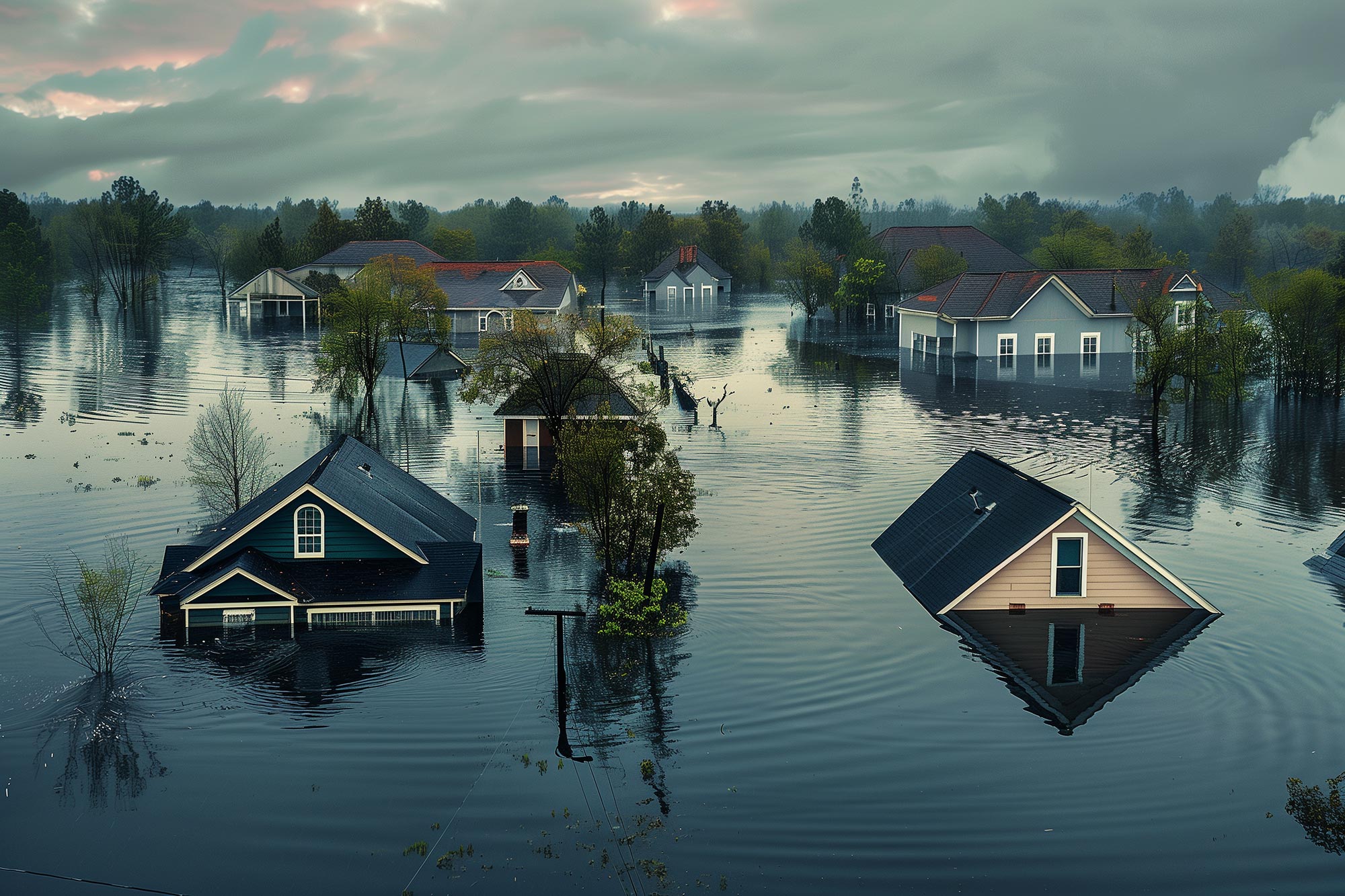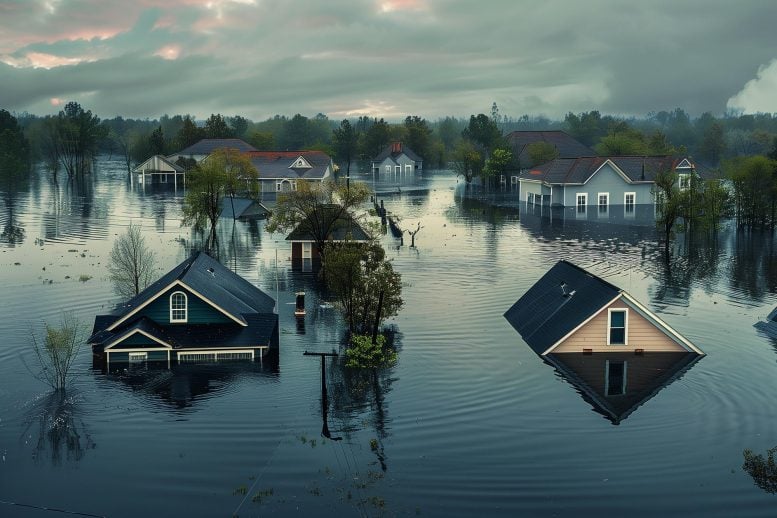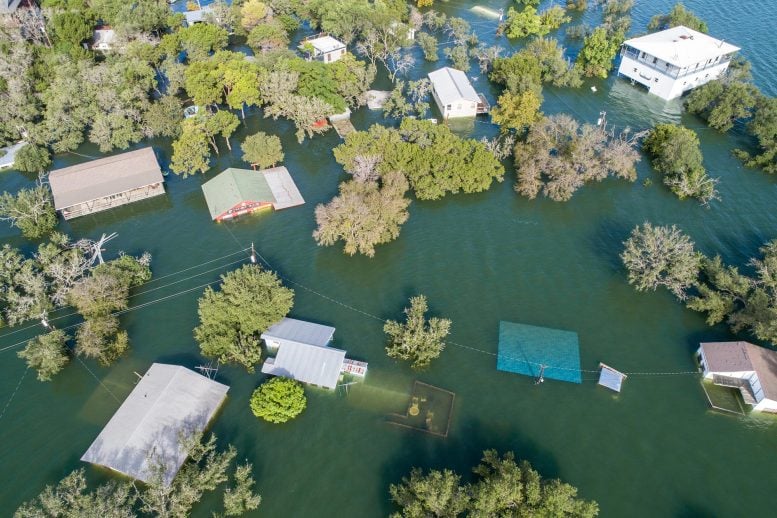

Flooding costs the U.S. $5 billion annually, with a federal program providing insurance discounts for flood mitigation. However, an MIT study finds that the program’s benefits are uneven, favoring wealthier, larger communities over smaller, diverse ones. There is a call for policy adjustments to include more disadvantaged areas.
Each year, flooding in the U.S. leads to approximately $5 billion in damages, with recent events like Hurricane Helene illustrating the severity of these weather-related disasters. These costs are more than any other type of weather-related extreme event.
In response to this problem, the federal government instituted a program in 1990 that helps reduce flood insurance costs in communities enacting measures to better handle flooding. If, say, a town preserves open space as a buffer against coastal flooding, or develops better stormwater management, area policy owners get discounts on their premiums. Studies show the program works well: It has reduced overall flood damage in participating communities.
Assessing Program Effectiveness Across Communities
However, a new study led by an MIT researcher shows that the effects of the program differ greatly from place to place. For instance, higher-population communities, which likely have more means to introduce flood defenses, benefit more than smaller communities, to the tune of about $4,000 per insured household.
“When we evaluate it, the effects of the same policy vary widely among different types of communities,” says study co-author Lidia Cano Pecharromán, a PhD candidate in MIT’s Department of Urban Studies and Planning.
Referring to climate and environmental justice concerns, she adds: “It’s important to understand not just if a policy is effective, but who is benefitting, so that we can make necessary adjustments and reach all the targets we want to reach.”
The paper, “Exposing Disparities in Flood Adaptation for Equitable Future Interventions in the USA,” is published on September 27 in Nature Communications. The authors are Cano Pecharromán and ChangHoon Hahn, an associate research scholar at Princeton University.

Disparities in Flood Response Efficacy
The program in question was developed by the Federal Emergency Management Agency (FEMA), which has a division, the Flood Insurance Mitigation Administration, focusing on this issue. In 1990, FEMA initiated the National Flood Insurance Program’s Community Rating System, which incentivizes communities to enact measures that help prevent or reduce flooding.
Communities can engage in a broad set of related activities, including floodplain mapping, preservation of open spaces, stormwater management activities, creating flood warning systems, or even developing public information and participation programs. In exchange, area residents receive a discount on their flood insurance premium rates.
To conduct the study, the researchers examined 2.5 million flood insurance claims filed with FEMA since then. They also examined U.S. Census Bureau data to analyze demographic and economic data about communities, and incorporated flood risk data from the First Street Foundation.
By comparing over 1,500 communities in the FEMA program, the researchers were able to quantify its different relative effects — depending on community characteristics such as population, race, income or flood risk. For instance, higher-income communities seem better able to make more flood-control and mitigation investments, earning better FEMA ratings and, ultimately, enacting more effective measures.
“You see some positive effects for low-income communities, but as the risks go up, these disappear, while only high-income communities continue seeing these positive effects,” says Cano Pecharromán. “They are likely able to afford measures that handle a higher risk indices for flooding.”
Similarly, the researchers found, communities with higher overall levels of education fare better from the flood-insurance program, with about $2,000 more in savings per individual policy than communities with lower levels of education. One way or another, communities with more assets in the first place — size, wealth, education — are better able to deploy or hire the civic and technical expertise necessary to enact more best practices against flood damage.
Challenges and Opportunities for Broader Impact
And even among lower-income communities in the program, communities with less population diversity see greater effectiveness from their flood program activities, realizing a gain of about $6,000 per household compared to communities where racial and ethnic minorities are predominant.
“These are substantial effects, and we should consider these things when making decisions and reviewing if our climate adaptation policies work,” Cano Pecharromán says.
An even larger number of communities is not in the FEMA program at all. The study identified 14,729 unique U.S. communities with flood issues. Many of those are likely lacking the capacity to engage on flooding issues the way even the lower-ranked communities within the FEMA program have at least taken some action so far.
“If we are able to consider all the communities that are not in the program because they can’t afford to do the basics, we would likely see that the effects are even larger among different communities,” Cano Pecharromán says.
Enhancing Policy Implementation
To make the program more effective for more people, Cano Pecharromán suggests that the federal government should consider how to help communities enact flood-control and mitigation measures in the first place.
“When we set out these kinds of policies, we need to consider how certain types of communities might need help with implementation,” she says.
Methodologically, the researchers arrived at their conclusions using an advanced statistical approach that Hahn, who is an astrophysicist by training, has applied to the study of dark energy and galaxies. Instead of finding one “average treatment effect” of the FEMA program across all participating communities, they quantified the program’s impact while subdividing the set of participating set of communities according to their characteristics.
“We are able to calculate the causal effect of [the program], not as an average, which can hide these inequalities, but at every given level of the specific characteristic of communities we’re looking at, different levels of income, different levels of education, and more,” Cano Pecharromán says.
Government officials have seen Cano Pecharromán present the preliminary findings at meetings, and expressed interest in the results. Currently, she is also working on a follow-up study, which aims to pinpoint which types of local flood-mitigation programs provide the biggest benefits for local communities.
Reference: “Exposing disparities in flood adaptation for equitable future interventions in the USA” by Lidia Cano Pecharroman, and ChangHoon Hahn, 27 September 2024, Nature Communications.
DOI: 10.1038/s41467-024-52111-0
Support for the research was provided, in part, by the La Caixa Foundation, the MIT Martin Family Society of Fellows for Sustainability, and the AI Accelerator program of the Schmidt Futures Foundation.

